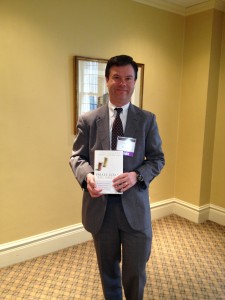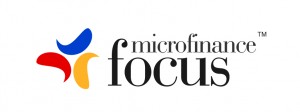Grameen Foundation taps microfinance and technology to battle poverty
 By Dr Priyanka Jayashankar, Associate Editor
By Dr Priyanka Jayashankar, Associate Editor
Microfinance Focus, May 07, 2013: As a Haitian microfinance borrower gets a micro-loan to propel his enterprise’s growth, farmers thousands of miles away in Indonesia tap mobile technology to sell their crops at a profitable rate. This is the Utopia that Grameen Foundation strives to create by leveraging a range of innovative tools to reduce poverty penalty. The organisation’s founder and CEO, Alex Counts has worked with Mohammad Yunus of Grameen Bank and is the author of the book ‘Small Loans, Big Dreams.’ On the sidelines of the 9th Annual Zell Center Chicago Microfinance Conference, Alex Counts shared his perspective about battling global poverty through microfinance and technology.
Performance of MFIs
Despite the fact that the microfinance sector has been beset by political interventions and client indebtedness, Alex Counts pointed out that there are MFIs worldwide, which have succeeded in boosting their financial and social performance. Grameen Foundation’s partner-MFIs, which have enhanced their double bottom line, include Grameen Koota (India), Cashpor (India), Al Tadamun (Egypt), FONDEP (Morrocco), Pro Mujer (Latin America) and LAPO (a Nigerian MFI that received a positive rating from MicroRate.)
Strong governance and clear measurable goals for financial and social performance would pre-empt the onset of mission drift in the microfinance sector, stated Alex Counts. Grameen Foundation’s social impact assessment scorecard, the Progress Out Of Poverty Index™ is being used by 200 leading MFIs worldwide. The foundation is also deploying a mobile app and cloud computing tools for monitoring and evaluating MFIs with the PPI™ scorecard.
Recent randomized control trial (RCT) experiments in microfinance have kindled the interest of academics as well as the media. While RCTs are powerful tools, Counts noted that RCTs have been conducted only on second tier MFIs and hence, a representative group from the microfinance sector has not been factored into the experiments. Calling for more quasi-experimental research in microfinance, he also discussed a new initiative wherein two independent researchers are collaborating with Grameen Foundation to evaluate all research methodologies relevant to the microfinance sector.
Market segments and saving for the future
Microfinance clients typically run tiny firms in order to battle poverty. Many of them are compelled to launch microenterprises due to the lack of employment opportunities in the private sector. Is there a need for micro-enterprises operating at a subsistence level to graduate into small and medium enterprise segment?
Alex Counts reasoned: “Not all micro-enterprises need to be scaled up. But with a market segmentation approach, a different set of financial products can be developed for high-potential micro-enterprises. Fonkoze, a partner MFI of Grameen Foundation in Haiti, has developed four product suites to cater to the needs of different market segments of micro-entrepreneurs, ranging from the ultra-poor to established micro-entrepreneurs needing larger business development loans.
Microfinance players are now shifting their focus to microsavings. Grameen Foundation has rolled out savings products in India, The Philippines and Ethiopia. The foundation is expecting to reach 900,000 to 1 million savers by the end of the year.
Promoting the concept of savings at the BoP can be challenging. Micro-entrepreneurs tend to have a more acute need for credit than savings to meet their working capital requirements.
However, MFIs have to inculcate a savings habit among borrowers, said the Grameen Foundation CEO. More liquid capital and cash inflows would eventually benefit clients.
Mobile banking can help reduce transaction costs for the saver as well as the MFI. The Indian MFI Cashpor reduced the dormancy rate of a no-frills savings account up to 16% through the use of e-transfers. Field officers at Cashpor also collect savings (in collaboration with partnering banks) during the loan repayment rounds. “Cashpor can leverage face-to-face contact with savers,” explained Alex Counts.
Restoring credibility
The microfinance sector’s reputation has been tainted with the spate of crises worldwide, and it is likely that hubris has led to nemesis. Counts called for greater modesty and humility, stating, “MFIs can show more modesty by reducing huge pay packages and stock options. Humility is needed to realise that microfinance is just another anti-poverty intervention.”
While the microfinance sector can tap capital markets, the underlying business model should be beneficial for the BoP. Counts is critical of Compartamos’s business model of charging high interest rates without the provision of savings services. But he is not opposed to the Compartamos IPO. Likewise, SKS’s business model of maximizing profits in the short-term and providing large pay packages to managers is also flawed in Counts’ view. The SKS IPO was not a wrong decision but “profits could have been re-invested in the poor rather than in pay packages,” he opined.
Client indebtedness is a bigger threat than multiple borrowing. “Multiple sources of credit can be helpful for meeting capital needs, provided borrowing does not go out of control. However, a client can be over-indebted even due to a single institution,” Counts inferred. The SMART Campaign can go a long way in enhancing client protection in the microfinance sector. “Grameen Koota, Cashpor and Ujjivan got an early certification from the SMART Campaign,” he recalled. Counts has also outlined steps for MFIs to regain public trust. Data on the impact of microfinance on clients’ lives may be published. Closer ties would have to be forged with policy makers and the media.
Financial inclusion and beyond
The unbanked poor remain scattered worldwide, especially in parts of India and Mexico, Pakistan , The Philippines and Brazil. Thus, there is much scope for promoting microfinance in untapped markets. Grameen Foundation has partnered MFIs such as Cashpor (India) and CARD (Philippines) as well as the telecom player MTN (Uganda) to provide mobile banking services. The organisation has also developed new tools to partner the BoP, which include a mobile app through which farmers in Indonesia and Rwanda can access agricultural information, and a mobile financial services incubator to test new concepts in mobile banking. To make healthcare available at the fingertips of rural Africans, Grameen Foundation has rolled out the mobile platform MOTECH, whereby pregnant women can easily healthcare-related information. While exuding cautious optimism, Alex Counts, signed off, saying “there are no quick fix solutions” to tackle problems plaguing the bottom of the pyramid segment.



Thank you for this article. I have been circulating it to friends of Grameen Foundation.
Let me offer a few points of clarification. I have been an advocate for using various types of research methodologies to learn more about microfinance’s impact and what works best — experimental designs, quasi-experimental designs, and non-experimental designs including qualitative research. All of these have pros and cons and I believe the best picture emerges by looking at all the research that is conducted to some minimum standards. Related, I referenced two studies that we commissioned to analyze the existing research — one by Nathanael Goldberg published in 2005 and one by Kathleen Odell in 2010. These are not new initiatives bur rather products of our longstanding desire to leverage quality research for improving microfinance.
On the issue of IPOs, I said, and believe, that we are not opposed to IPOs per se, but rather the profit-maximizing business models and values that often accompany them.
We have published a document about what Grameen Foundation believes about financial services to the poor and it can be accessed here: http://www.grameenfoundation.org/what-we-do/financial-services/what-we-believe
Thanks again for the coverage.
-Alex